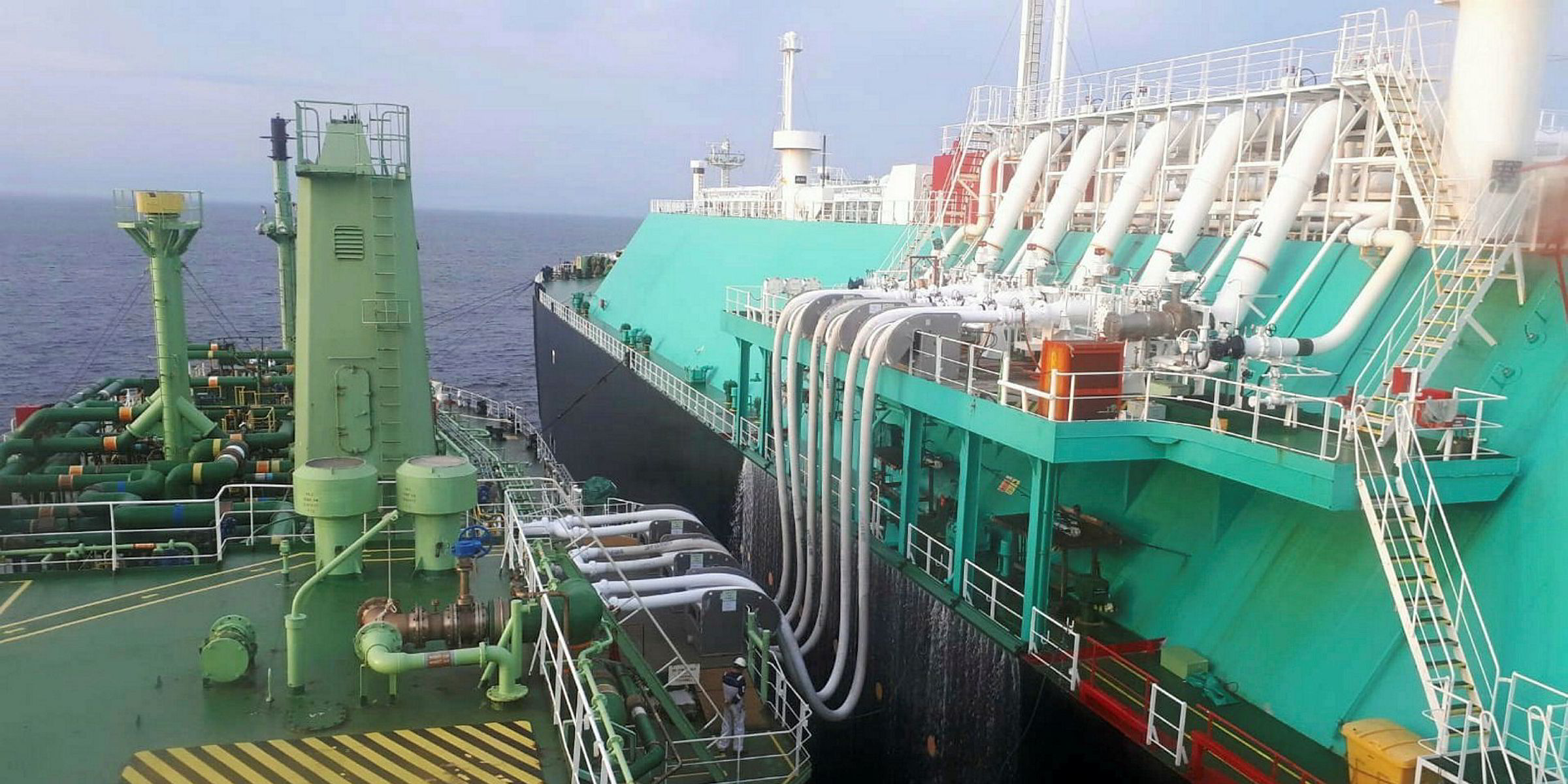Only 6% of the global trading LNG carrier fleet has provision in place to cover emergency ship-to-ship (STS) transfer operations.
LNGSTS technical and project manager Adam Sanders said this could potentially leave vessels in the 500-plus LNG trading fleet at risk if they suffer an incident and no equipment can be accessed quickly.
Speaking at the LNG Emergency Ship-to-Ship Forum in London, arranged by the Teekay Tankers-controlled transfer specialist firm, he added that as the LNG fleet grows, the likelihood of an incident increases.
LNGSTS general manager LNG Stuart Goddard said the industry should consider making provision for such emergency operations in the charter parties.
“There is a gap and it needs to be addressed,” Goddard said. “Owners need to look at what they have and what is out there and make a decision on whether their ships are safe and covered.”
At present, there are few pieces of emergency STS kit in place, although this type of equipment is becoming more widely used in commercial operations.
Qatar’s LNG interests made timely provision of STS equipment, stationing kit in Qatar and Rotterdam and using it in January 2014 to offload a cargo after a collision involving the Qatargas-chartered, 215,000-cbm Q-Flex Al Gharrafa (built 2008) off Singapore.
Four incidents
The incident is one of four that have involved emergency STS transfers in recent years. Another involved Teekay LNG’s 165,500-cbm Magellan Spirit (built 2009), which went aground with a full cargo in 2015.
LNGSTS, which is owned by Teekay Tankers' Teekay Marine Services and has conducted around 500 operations, has two full transfer kits. One is being relocated to Singapore and the second is based at Freeport in the US Gulf.
Sanders said the company undertakes that only one of these will be in use commercially at any one time, with the other crated and ready to be deployed by air or sea at 24 hours’ notice.
He pointed out that the equipment is not cheap, costing around $1.5m for the initial investment and $75,000 per year in storage, maintenance and replacement parts. The company says it needs to sign up about 100 ships to back investment in one piece of kit.
Sanders said there is a growing demand for LNG STS transfers in the commercial environment as the industry develops and operations increase from floating storage and regasification units, plus breakbulk, gassing up and cool-down and, in the future, LNG bunkering operations.
He and Goddard pointed out that only 24 hours earlier, one of LNGSTS’ two pieces of transfer equipment had been used in an operation for Petronas’ first breakbulk operation in Malaysia, tying it up for three days.




